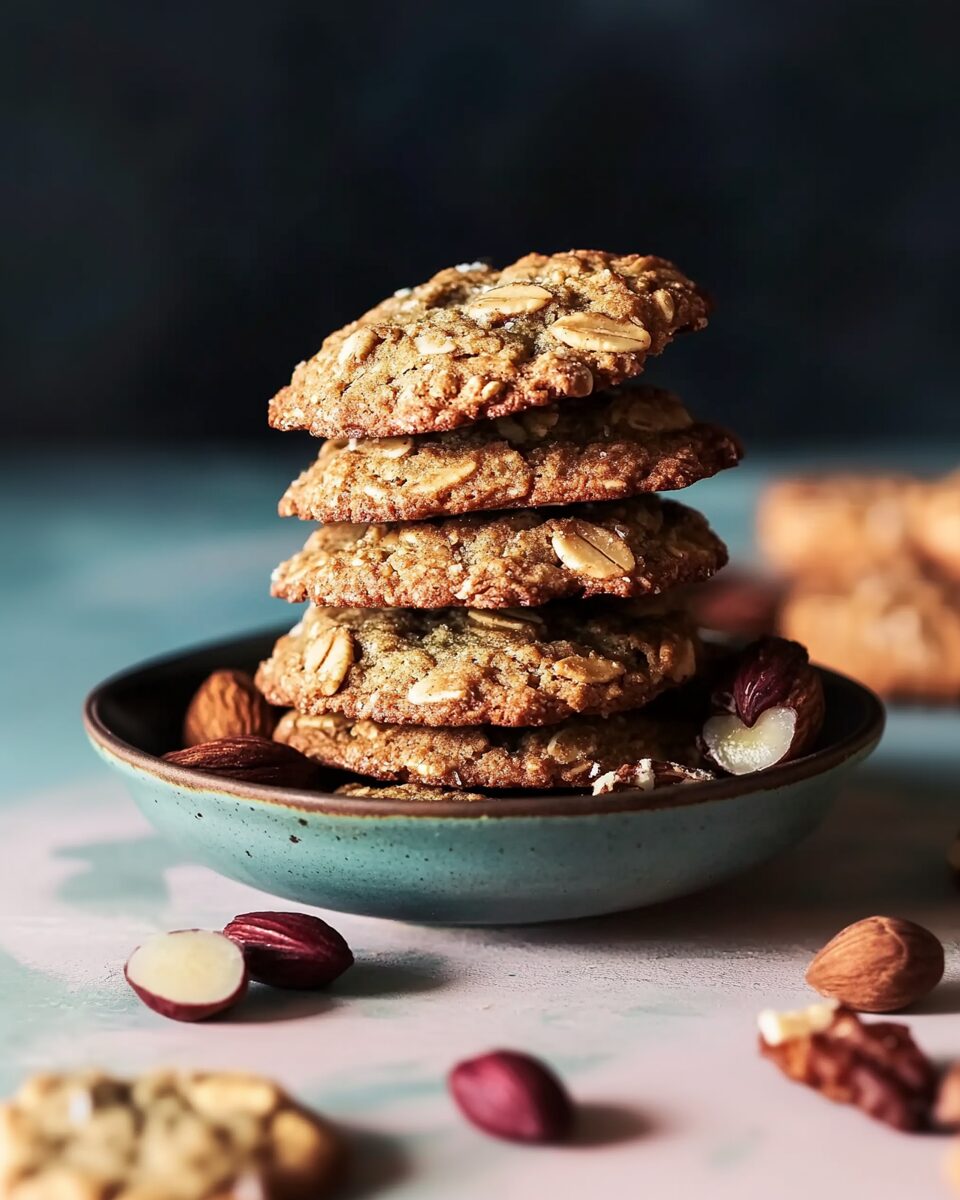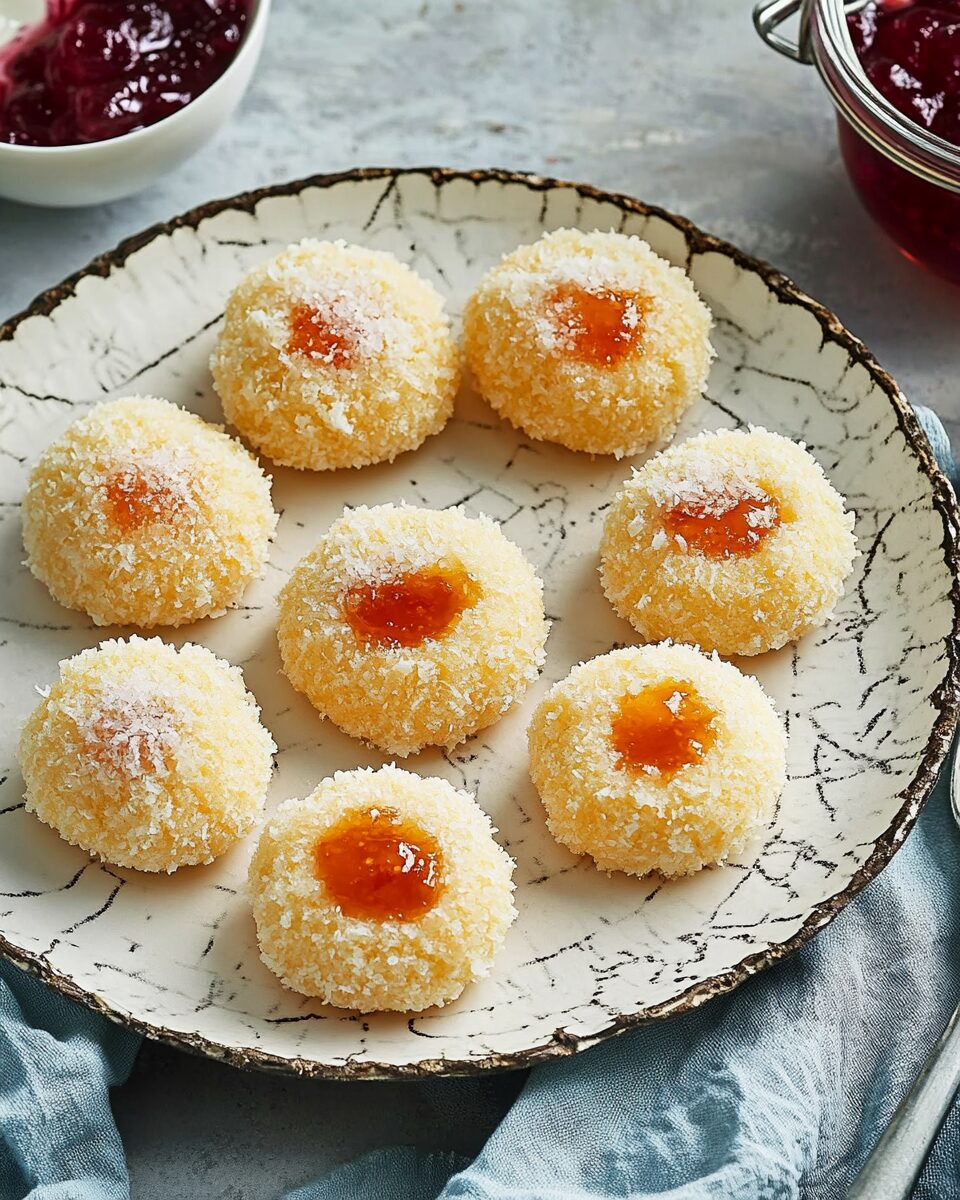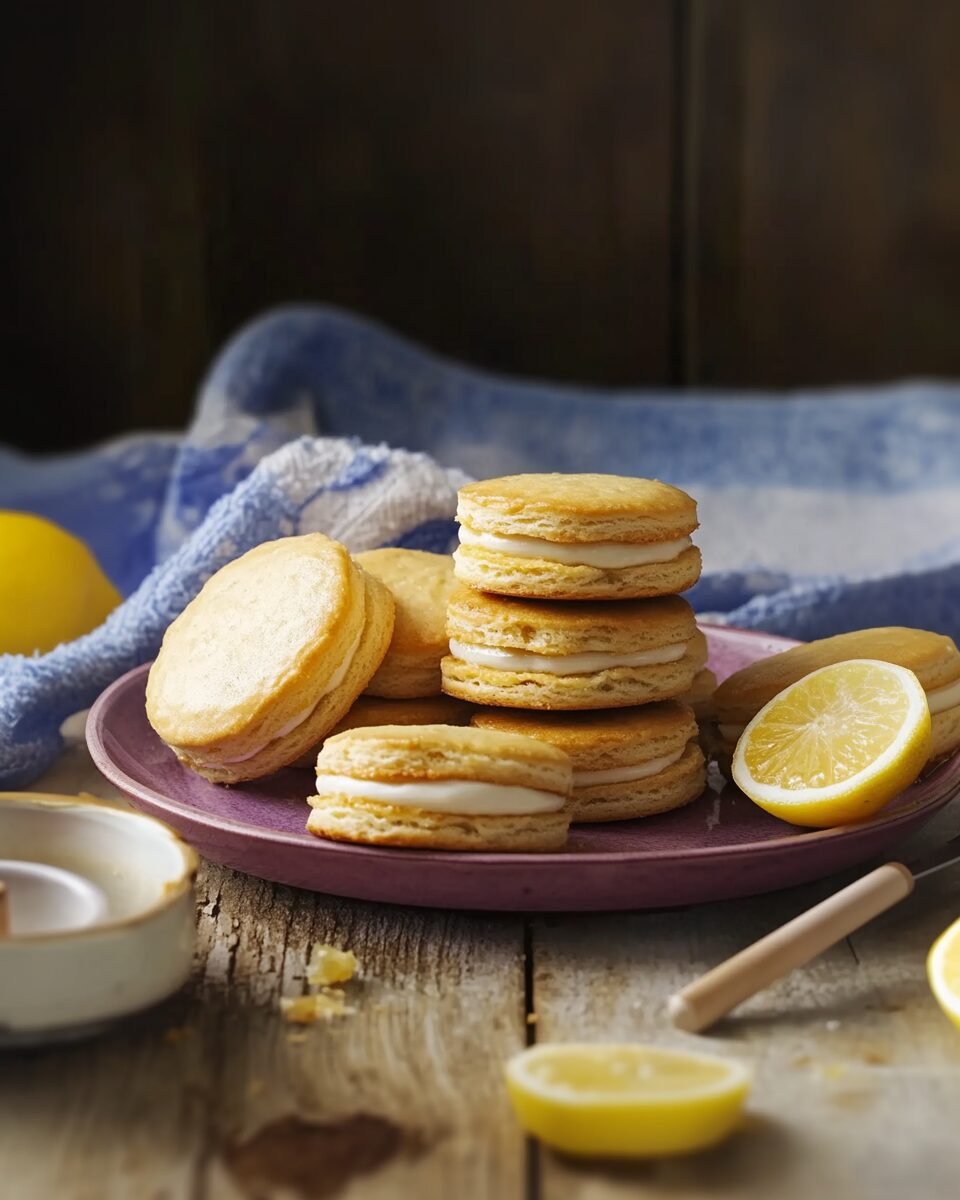Gingernuts are classic spiced biscuits cherished for their crisp texture and warm, aromatic flavor. Infused with ginger, cinnamon, and cloves, these cookies are a staple in many households, especially during tea time. Their robust flavor and satisfying crunch make them a delightful treat for all ages.
Full Recipe:
Ingredients
- 90 grams butter, chopped
- 1/3 cup (75g) firmly packed light brown sugar
- 1/3 cup (115g) golden syrup or treacle
- 1 1/3 cups (200g) plain flour
- 3/4 teaspoon bicarbonate of soda
- 1 teaspoon ground cinnamon
- 1 tablespoon ground ginger
- 1/4 teaspoon ground cloves
Directions
- Preheat oven to 180°C (160°C fan-forced). Grease two oven trays and line with baking paper.
- In a small saucepan, combine butter, brown sugar, and golden syrup. Stir over low heat until butter is melted.
- Remove from heat and stir in sifted flour, bicarbonate of soda, cinnamon, ginger, and cloves. Let the mixture stand until it’s warm to the touch.
- Roll one level tablespoon of the mixture into balls (you should have 10 balls). Place them 3cm apart on the prepared trays and flatten slightly with your hand.
- Bake for about 12 minutes or until browned. Loosen biscuits and cool on trays.
Nutritional Facts (Per Serving)
- Calories: 180 kcal
- Protein: 2 g
- Carbohydrates: 25 g
- Fat: 8 g
- Saturated Fat: 5 g
- Fiber: 1 g
- Sugar: 12 g
- Sodium: 150 mg
The History of Gingernuts
The origins of gingernuts trace back to the 19th century, where gingerbread was the precursor to the now-famous gingernut. Gingerbread itself has a long history dating back to ancient civilizations like the Egyptians and Greeks, who used spices like ginger, cinnamon, and honey in their baked goods. However, the modern gingernut biscuit as we know it is thought to have emerged in England in the 1800s.
Originally, ginger was used for its medicinal properties, aiding digestion and offering a remedy for various ailments. As time passed, the spice became a popular ingredient in both savory and sweet recipes. The combination of ginger with other spices like cinnamon and cloves became a signature flavor profile for what we know as gingerbread. Over time, these flavors were adapted to form more delicate, crunchy biscuits, leading to the creation of gingernuts.
While gingernuts were initially considered a treat reserved for the wealthy, they eventually became accessible to the broader public, particularly in the United Kingdom, Australia, and New Zealand, where they remain popular to this day. These countries, with their British colonial roots, adopted and adapted the gingernut, making it an integral part of their snack culture.
The Key Ingredients of Gingernuts
The distinctive flavor of gingernuts comes from the key ingredients: ginger, cinnamon, and cloves. Ginger, the star of the show, imparts a warm, slightly spicy kick that gives the biscuits their signature flavor. Cinnamon adds a touch of sweetness and earthiness, while cloves bring a hint of warmth and depth to the overall profile.
But the true secret to a perfect gingernut lies in its texture. The use of butter and syrup in the recipe ensures the biscuits are crisp and slightly crumbly, making them ideal for dipping into a cup of tea or coffee. The sweetness of golden syrup or treacle provides the right amount of richness to balance the spiciness of the ginger and the aromatic flavors of the other spices.
Another interesting component of gingernuts is their simplicity. Unlike some other biscuits that require a complex mix of ingredients or fancy techniques, gingernuts are made from basic pantry staples. The simplicity of their ingredients allows the spices to shine through, creating a no-frills, yet exceptionally flavorful treat.
Health Benefits of Ginger
In addition to its delightful taste, ginger offers numerous health benefits. Ginger has been used for centuries in traditional medicine, particularly in cultures like Chinese and Indian, where it’s believed to possess healing properties. As a root vegetable, ginger is rich in antioxidants and bioactive compounds that can help reduce inflammation and improve digestion.
One of the primary health benefits of ginger is its ability to soothe digestive issues. It is often used to alleviate nausea, indigestion, and bloating. For individuals suffering from motion sickness or morning sickness during pregnancy, ginger has been shown to be a natural and effective remedy.
Ginger also contains compounds known as gingerols, which have been found to have anti-inflammatory and antioxidant properties. These compounds may help reduce the risk of chronic diseases such as heart disease and diabetes. In addition, ginger can aid in reducing muscle pain and soreness, making it a great natural remedy for athletes or those dealing with everyday aches.
While gingernuts may not be a health food per se, the inclusion of ginger in the recipe means that you’re getting some of these health benefits with every bite. Of course, moderation is key, as these biscuits still contain sugar and fat, but the inclusion of ginger certainly adds an extra health boost to this tasty treat.
Making Gingernuts Your Own: Variations on the Classic Recipe
One of the best things about gingernuts is their versatility. While the traditional recipe remains a firm favorite, there are many ways to customize the biscuits to suit your tastes or dietary preferences.
For those looking to reduce their sugar intake, you can substitute the golden syrup or treacle with a healthier sweetener like honey, maple syrup, or agave nectar. These alternatives provide a natural sweetness and may even offer additional nutrients like antioxidants and vitamins.
If you’re following a vegan or dairy-free diet, you can easily make gingernuts without butter by using plant-based alternatives. Coconut oil or vegan butter can provide the same richness and texture, while still maintaining the signature crunchiness of the original recipe.
For a fun twist on the classic gingernut, consider adding mix-ins like dark chocolate chips, chopped nuts, or dried fruit. These additions can give the biscuits a new dimension of flavor and texture while complementing the spiciness of the ginger. Some bakers even experiment with adding orange zest or a dash of vanilla extract for an added layer of complexity.
If you prefer a softer ginger biscuit, you can slightly adjust the baking time, removing the cookies from the oven just before they turn golden brown. This results in a chewier texture, perfect for those who don’t enjoy the traditional crisp crunch.
Gingernuts and Their Popularity in Modern Times
Today, gingernuts remain a popular treat in various countries, particularly in the UK, Australia, and New Zealand, where they continue to be a staple in many households. In these regions, gingernuts are commonly enjoyed with a hot cup of tea or coffee, offering a comforting, satisfying snack in the afternoon or evening.
In addition to being enjoyed on their own, gingernuts have found their way into many different recipes. Crushed gingernuts are often used as a crust for cheesecakes and pies, adding a spicy twist to the traditional graham cracker crust. Some recipes incorporate gingernuts as an ingredient in cakes, ice creams, or even savory dishes, showcasing the versatility of this humble biscuit.
The popularity of gingernuts has also led to a variety of commercially-produced versions, available in supermarkets and specialty food stores. While these mass-produced biscuits may not match the flavor and texture of homemade gingernuts, they have made this once humble snack accessible to people who might not have the time or inclination to bake.
Conclusion: A Timeless Classic
Gingernuts are more than just a simple biscuit – they are a testament to the power of simplicity in baking. With their rich, spiced flavor and satisfying crunch, they continue to be a favorite for people of all ages. Whether enjoyed with a hot cup of tea or used in creative recipes, gingernuts remain a timeless classic that stands the test of time.








